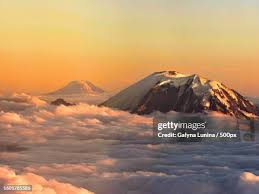
Introduction
Mount Rainier, standing tall at 14,411 feet, is Washington State’s highest peak and a vital natural landmark. As an active stratovolcano and a major attraction within Mount Rainier National Park, it draws millions of visitors each year, not just for its stunning views, but also for its ecological significance. The mountain is crucial for local biodiversity and water supply, making it an important site for conservation and recreation alike.
Current Events and Facts
This summer, Mount Rainier National Park reported a spike in visitation, with records indicating over two million visitors between June and September alone. This influx highlights the increasing public interest in outdoor activities, especially amid ongoing pandemic-related restrictions that have led many to seek solace in nature.
Recent efforts to preserve the park’s unique ecosystems are underway. The National Park Service (NPS) has launched initiatives focusing on environmental stewardship, including invasive species management and habitat restoration. Additionally, the park is actively working on a climate resilience strategy to adapt to the impacts of climate change, such as glacial retreat and changing weather patterns that could affect both flora and fauna.
Community and Cultural Importance
The mountain holds significant cultural value for several Indigenous tribes of the region, including the Puyallup and Muckleshoot tribes, who view it as a sacred site. Efforts to integrate Indigenous history and knowledge into park education programs are being enhanced to foster a deeper understanding of the mountain’s cultural significance.
Conclusion
As the appeal of Mount Rainier continues to grow, it underscores the importance of balancing recreation with conservation. Visitors are encouraged to engage in sustainable practices while enjoying the natural beauty the park offers. The ongoing stewardship efforts will play a pivotal role in ensuring that future generations can enjoy Mount Rainier’s majestic landscape. Looking ahead, Mount Rainier remains not just a symbol of the Pacific Northwest, but a testament to the need for preservation in an ever-changing world.



